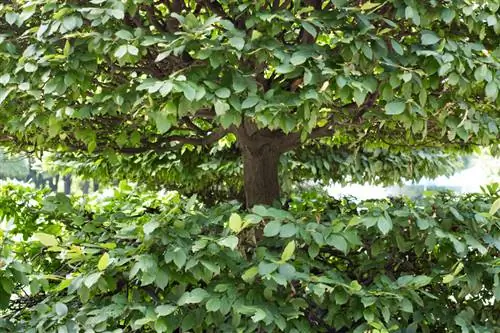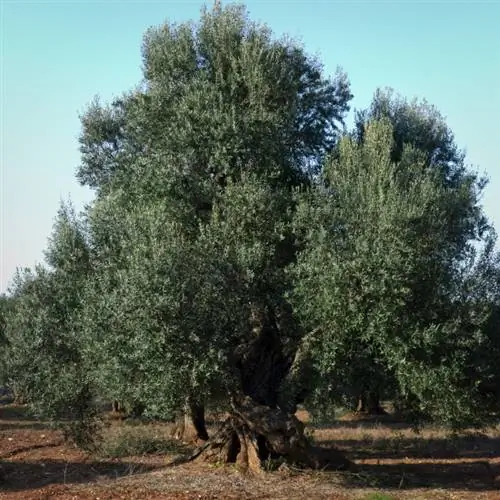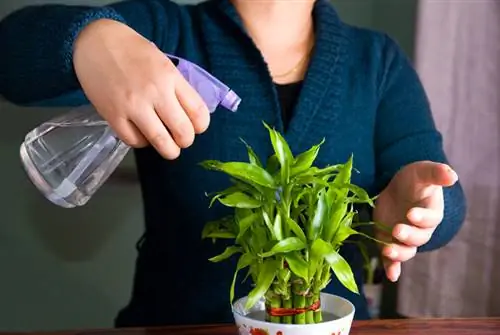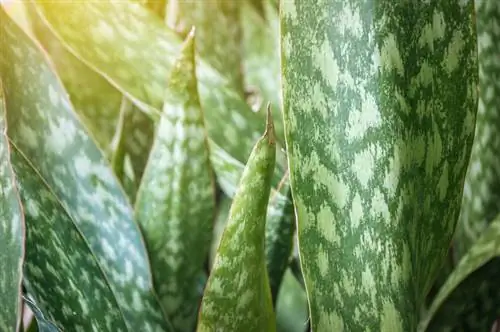- Author admin [email protected].
- Public 2023-12-16 16:46.
- Last modified 2025-01-23 11:20.
Hornbeams are very robust trees that have few diseases and pests. A poor location, dryness or too much moisture are often responsible for the occurrence of diseases. This is how you can tell what the hornbeam is missing and what you can do about it.

What diseases occur in hornbeams and how can you combat them?
Hornbeam diseases can be caused by powdery mildew, leaf spot fungus and hornbeam spider mites. To combat these, infected leaves should be removed, fungicides used or treated with a spray against spider mites.
What diseases and pests can occur?
Aphids and other pests rarely appear. When it comes to hornbeams, gardeners often have to deal with the following diseases and pests:
- Powdery mildew
- Leaf spot fungus
- hornbeam spider mite
Identify and treat powdery mildew
The leaves of the hornbeam are covered with a whitish coating, curl up and show yellowish and brown spots. These disease symptoms indicate powdery mildew.
Powdery mildew occurs when there is too much moisture. Water the hornbeam more frequently in very dry summers and winters, at least while it is still young.
Cut off affected leaves and dispose of them. If the infestation is severe, a fungicide can help.
How to fight leaf spot fungus
The leaf spot fungus is noticeable through brown and yellow spots on the leaves. It primarily damages very young trees, for which it can pose a real danger.
Cutting helps here too. If the fungus cannot be contained, you should use an appropriate fungicide on younger hornbeams.
What to do against hornbeam spider mites
Hornbeam spider mites are often very intense. First the leaves get small dots. Later they are covered with a fine mesh and fall off.
Just cutting usually doesn't help. Treat the hornbeam with a spray against spider mites (€13.00 on Amazon).
Always dispose of affected leaves
With he althy hornbeams, it makes sense to simply leave the leaves lying in spring. It forms a protective mulch and provides the hornbeam with nutrients.
However, if the tree is affected by diseases or pests, you must always dispose of the leaves and all cut parts of the plant in the household waste.
Under no circumstances should these residues be put on the compost heap. The pests and fungi can then spread and attack other plants.
Tip
Prevention is better than cure, even with hornbeams. Make sure that the hornbeam is not too dry or too wet. Regular care through thinning prevents the spread of diseases.






